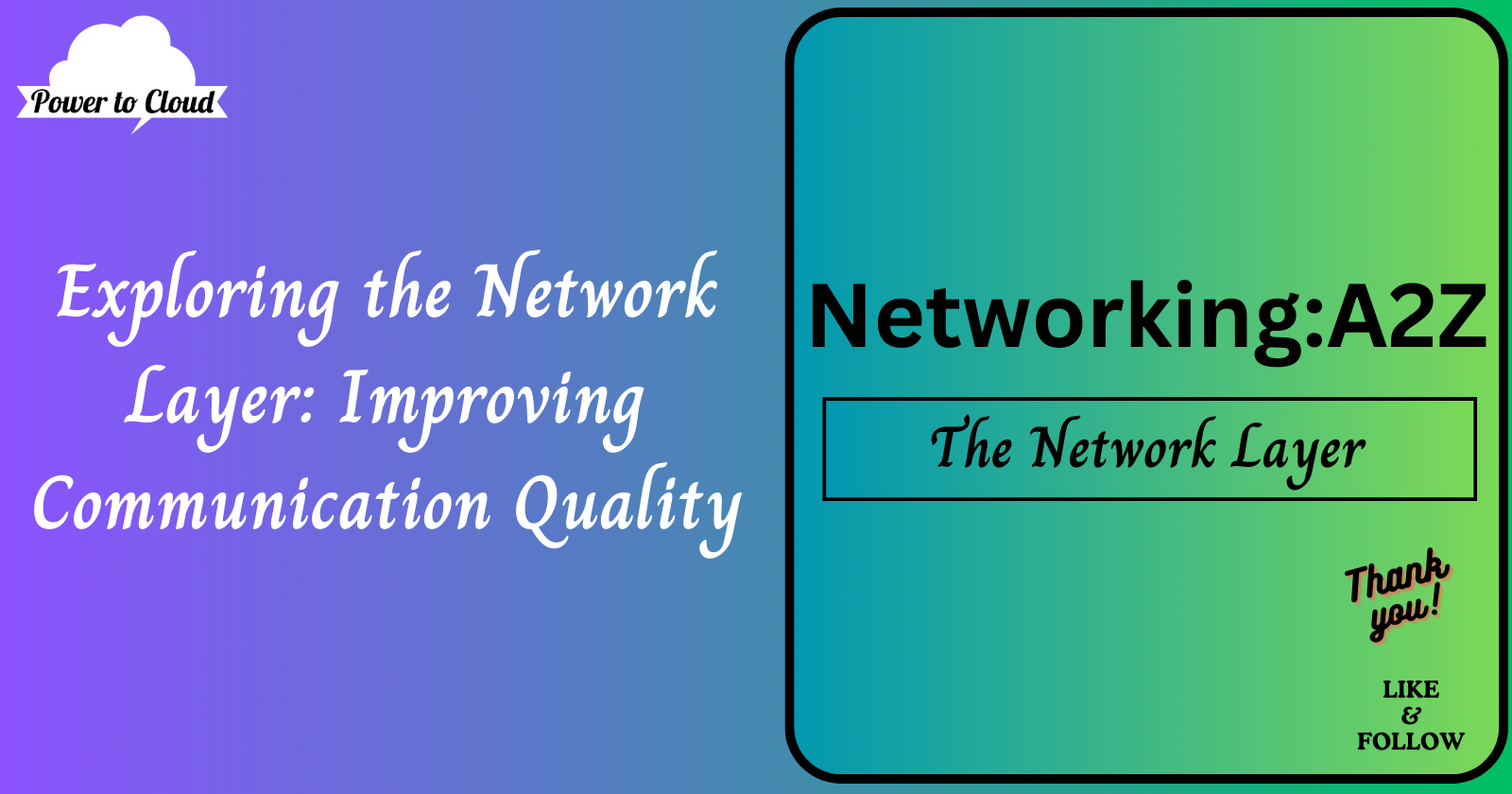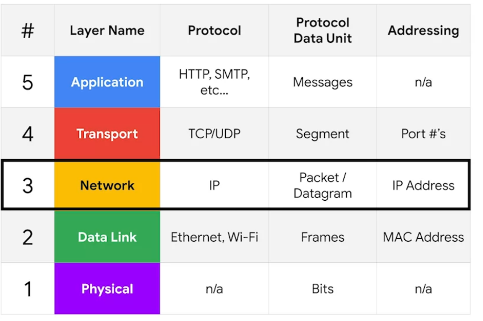2.2 Exploring the Network Layer: Improving Communication Quality
 Vijay Kumar Singh
Vijay Kumar Singh
Introduction
In the intricate web of modern networking, where data flows like a river, the Network Layer stands as a pivotal bridge, connecting disparate systems across vast distances. In this journey through the Network Layer, we'll delve into its fundamental concepts, its evolution from Local Area Networks (LANs), and the introduction of the Internet Protocol (IP) to address the limitations of MAC addressing.
Local Area Network (LAN) and MAC Addressing
At the heart of many local networks lies the Local Area Network (LAN), where nodes communicate with each other using physical MAC addresses. This method proves efficient within confined spaces, as switches swiftly learn the MAC addresses connected to their ports. However, despite its effectiveness on a small scale, MAC addressing reveals its limitations when networks expand.
The Limitations of MAC Addressing
MAC addressing, while reliable for LANs, struggles to scale effectively. Each network interface possesses a globally unique MAC address, devoid of systematic ordering. Consequently, this lack of scalability hampers long-distance communication, impeding the seamless flow of data across networks.
Address Resolution Protocol (ARP) and Its Constraints
Address Resolution Protocol (ARP) steps in to mitigate some of MAC addressing's limitations by facilitating nodes in learning each other's physical addresses. However, its functionality remains confined to a single network segment, rendering it inadequate for broader network communication.
Enter the Network Layer
To overcome the constraints posed by MAC addressing and ARP, the Network Layer emerges as a beacon of innovation. It introduces the Internet Protocol (IP), a versatile framework designed to navigate the complexities of modern networking.

Understanding IP Addressing
At the core of the Network Layer lies the IP address, a numerical label assigned to each device connected to a network. Mastery of IP addressing empowers network engineers to identify, classify, and route data across vast distances with precision and efficiency.
Unveiling the IP Datagram
Within the intricate dance of network communication, the IP datagram serves as the vessel carrying precious cargo across the digital expanse. Encapsulated within the payload of an Ethernet frame, the IP datagram bears critical information, meticulously structured to ensure its safe passage through the network.
Deciphering the IP Datagram Header
A closer examination of the IP datagram reveals a myriad of fields, each serving a distinct purpose in the journey of data transmission. From source and destination IP addresses to time-to-live (TTL) and protocol fields, each element plays a crucial role in guiding the datagram to its intended destination.
Conclusion
In the ever-expanding realm of networking, the Network Layer remains an indispensable cornerstone, facilitating seamless communication across vast distances. Through the evolution of LANs, the introduction of IP addressing, and the meticulous design of the IP datagram, engineers continue to push the boundaries of connectivity, forging new pathways for the digital age. As we unravel the complexities of the Network Layer, we gain a deeper appreciation for the intricate web of communication that underpins our modern world.
Subscribe to my newsletter
Read articles from Vijay Kumar Singh directly inside your inbox. Subscribe to the newsletter, and don't miss out.
Written by

Vijay Kumar Singh
Vijay Kumar Singh
I'm Vijay Kumar Singh, a Linux, DevOps, Cloud enthusiast learner and contributor in shell scripting, Python, networking, Kubernetes, Terraform, Ansible, Jenkins, and cloud (Azure, GCP, AWS) and basics of IT world. 💻✨ Constantly exploring innovative IT technologies, sharing insights, and learning from the incredible Hashnode community. 🌟 On a mission to build robust solutions and make a positive impact in the tech world. 🚀 Let's connect and grow together! #PowerToCloud